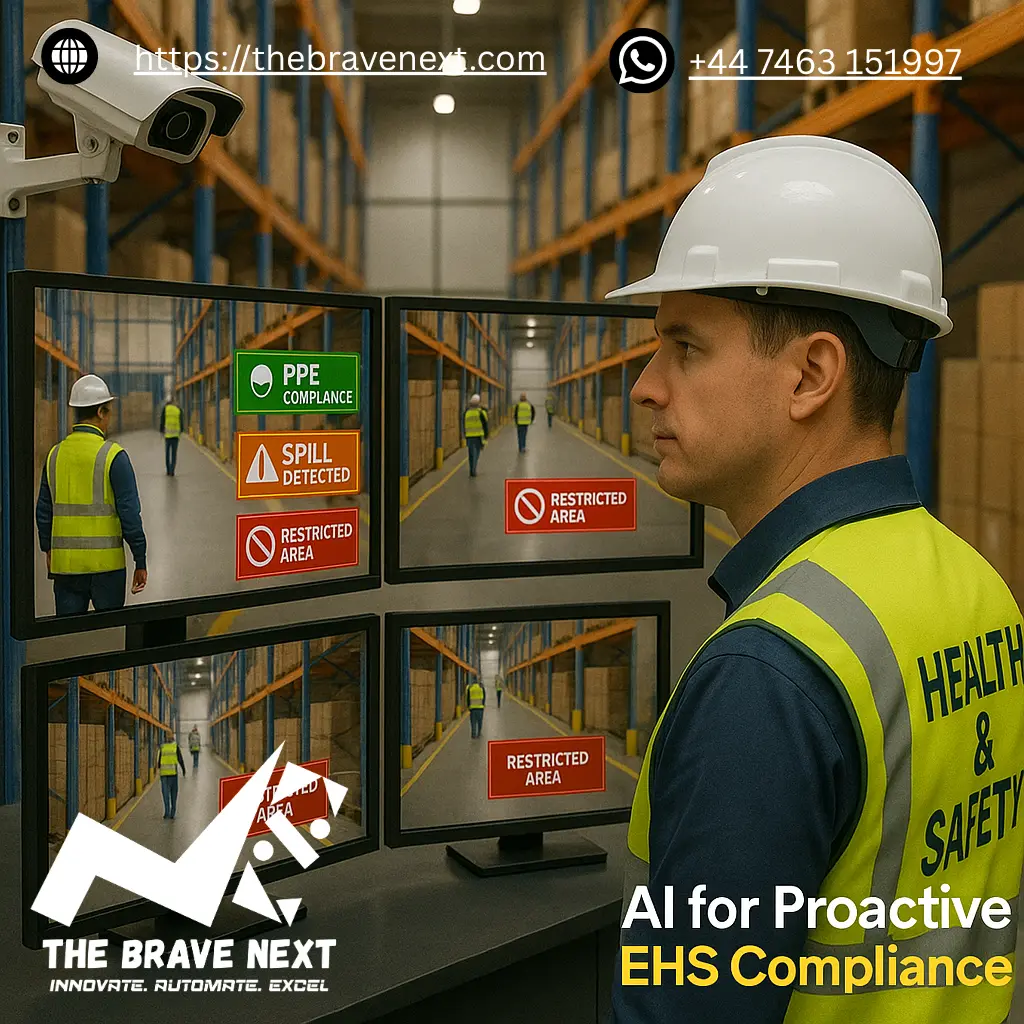

In today’s fast-paced industrial and corporate environments, staying ahead of Environmental, Health, and Safety (EHS) risks is not just about meeting compliance standards — it’s about protecting people, assets, and the environment before incidents occur. Artificial Intelligence (AI) is transforming traditional EHS models from reactive to proactive, enabling organizations to predict, prevent, and respond to potential hazards in real-time. This blog explores how AI empowers businesses to take control of their EHS responsibilities like never before.
Proactive EHS compliance refers to the strategy of identifying risks before they lead to incidents. Unlike reactive approaches that respond after something goes wrong, proactive compliance uses data-driven methods and predictive tools — such as AI — to foresee and manage potential issues. This reduces downtime, improves safety, and fosters a culture of responsibility.
AI algorithms can analyze vast amounts of data from IoT sensors, historical incident reports, environmental monitors, and more to detect patterns and predict hazards. For instance, if a machine consistently shows irregular vibration patterns, AI can flag it before it becomes a workplace hazard.
Smart sensors, powered by AI, provide real-time updates on noise levels, gas leaks, temperature fluctuations, or human activity in restricted zones. This live feedback allows EHS managers to take immediate action before a dangerous threshold is breached.
With AI-powered cameras, companies can detect unsafe human behaviors such as failure to wear PPE, entering unauthorized areas, or operating heavy equipment incorrectly. These visual systems can send alerts instantly, preventing injuries and reinforcing safety policies.
One of the most overlooked safety risks is equipment malfunction. AI-driven predictive maintenance uses sensor data to forecast when a machine is likely to fail, enabling timely repairs and avoiding dangerous breakdowns during operation.

Manual compliance tracking can be time-consuming and error-prone. AI streamlines this by automatically generating reports, identifying non-compliance areas, and suggesting corrective actions. This ensures businesses remain audit-ready and reduce penalties.
AI can interpret environmental data like air quality, emissions, and noise levels to ensure environmental compliance and worker health. It can even integrate weather data to anticipate hazardous conditions such as storms or high temperatures that may impact safety.
Interactive AI chatbots can help employees quickly report hazards, near misses, or ask questions about safety procedures. These tools also provide on-demand training and reminders, keeping workers informed and engaged in safety best practices.
AI helps build a transparent and data-driven safety culture by showing employees the real impact of their actions. Dashboards displaying live safety metrics and incident trends foster accountability and continuous improvement.
As regulations evolve and work environments grow more complex, AI ensures that organizations stay ahead of the curve. It adapts to new risks, updates protocols automatically, and integrates with other smart systems to create a robust and future-proof EHS ecosystem.
AI is no longer a futuristic concept — it's a practical solution revolutionizing EHS management. By identifying, preventing, and eliminating hazards in real-time, organizations not only protect their workforce but also improve operational efficiency and reduce costs. The future of EHS is proactive, intelligent, and powered by AI.
Our in-depth analysis of AI-driven workplace safety has been featured across respected publishing and industry platforms. You can explore the full article on:
AI analyzes data from multiple sources like sensors, cameras, and past incident logs to detect patterns that may indicate potential hazards. By spotting anomalies or unsafe conditions early, AI helps organizations respond before accidents occur, making workplaces safer and more efficient.
Not at all. While large industries benefit from AI's scalability, small and mid-sized businesses can also adopt AI tools tailored to their size and needs. Cloud-based platforms and AI-as-a-Service models have made these technologies accessible and cost-effective for all business types.
AI is designed to assist, not replace, human safety officers. It automates data collection, provides real-time alerts, and offers predictive insights, but human oversight is essential for decision-making, empathy, and on-the-ground actions. Together, AI and human intelligence create a more proactive and reliable safety system.
Please send your query or requirements in detail via whatsapp, and we will respond shortly.
Thank you!